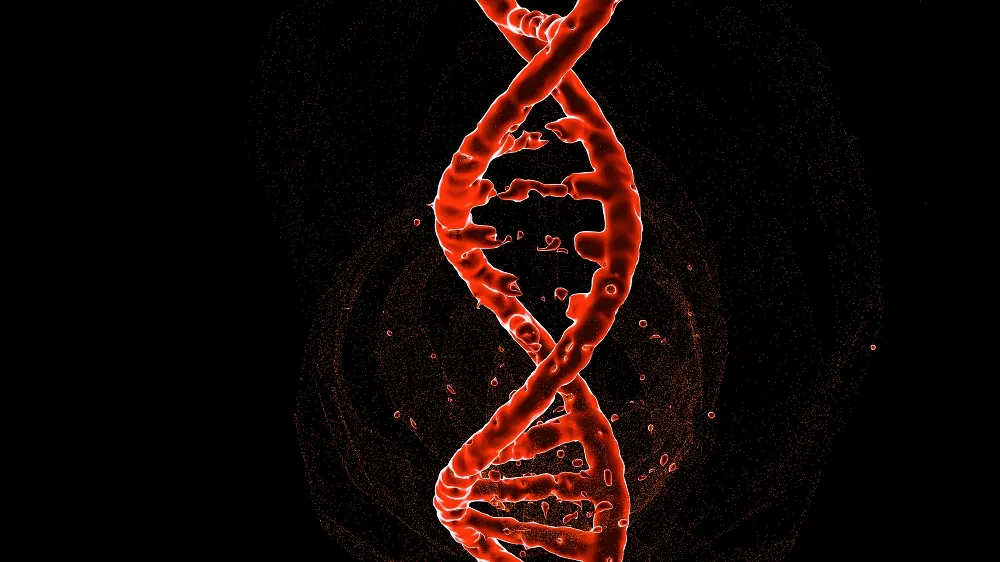A new study reveals a surprising mechanism that might be behind the beneficial effects of NAD+ in preclinical models of Alzheimer’s [1].
Which way to splice it?
Not every part of a DNA sequence gets translated into a protein. Each sequence consists of exons, which are included in the final RNA transcript, and introns, which are thrown away.
However, nothing is that simple in biology. Exons and introns can be combined in various ways to create several versions of the protein, with different and sometimes opposite qualities. This is known as alternative RNA splicing. It gets increasingly dysregulated as we age [2] and has been implicated in various diseases, including Alzheimer’s disease (AD) [3].
NAD+ is a key metabolite that also modulates RNA processing. It slows Alzheimer’s disease progression in preclinical models [4], but the mechanism behind this effect is not well understood. In a new study from the University of Oslo published in Science Advances, the researchers asked whether this could be related to alternative splicing.
“Preliminary studies have shown that supplementation with NAD⁺ precursors, such as nicotinamide riboside (NR) or nicotinamide mononucleotide (NMN), can offer therapeutic benefits in AD animal models and early clinical trials. However, the molecular mechanisms behind these benefits remain largely unclear,” first author Alice Ruixue Ai said.
From worms to mice
First, the researchers used C. elegans nematode worms engineered with two key features: neurons that express a human P301L tau variant (a model of tauopathy, which is a hallmark of Alzheimer’s) and a fluorescent reporter that changes green/red signal depending on how a particular exon is spliced. In aging tau worms, the reporter showed that splicing becomes gradually more error-prone. The worms also developed memory-like defects and shorter lifespans.
Treating worms from hatching with nicotinamide riboside (NR), a NAD+ precursor, altered the neuronal splicing fidelity, with strong effects early in life, suggesting that NAD+ can modulate splicing machinery during development. It also partially rescued lifespan and memory.
In a mouse model of tauopathy (Tau.P301S mice, with human P301S tau expressed in neurons), the researchers saw a similar picture: splicing in tau mice was disrupted and partially normalized by NR. This time, however, they focused on the mechanism.
Hippocampal RNA sequencing found 509 differentially expressed genes compared to wild-type mice, with many affected genes involved in RNA processing and splicing. The gene Eva1c, which codes for a protein involved in neuronal development and activity, was both significantly upregulated and abnormally spliced in tauopathic mice compared to controls.
NR supplementation significantly reversed both expression and splicing changes, which made Eva1c stand out. An AI-based analysis suggested that the key effects were less caused by the overall levels of this protein and more by the proportions of its various isoforms.
The researchers then manipulated the gene in mice and its homolog (eva-1) in worms. In C. elegans, eva-1 knockdown abolishes NR’s benefits on lifespan and memory-like behavior in tau worms, showing that those benefits indeed were eva-1-dependent.
Restoring the balance
In a slightly different mouse model with tauopathy induced by AAV-based tau overexpression, experiments involved Eva1c manipulation alongside supplementation with NMN, another NAD+ precursor. The researchers changed the Eva1c isoform mix by overexpressing the one isoform that was most robustly altered by NR in previous experiments.
Tau.P301S AAV mice showed memory deficits in the novel object recognition test, but NMN treatment brought the readouts back to control levels. This effect disappeared with the Eva1c knockdown. Overexpressing the most NR-responsive isoform partly mimicked the NMN effect.
A similar pattern was seen for total and phosphorylated tau levels. Together, this shows that NMN’s anti-tau and pro-memory effects in this mouse model require intact Eva1c and can be mimicked by restoring the Eva1c isoform balance, such as by rescuing alternative splicing.
“Notably, we found that when the EVA1C gene was knocked down, these benefits were lost, confirming that EVA1C is essential for NAD⁺-mediated neuroprotection,” Associate Professor Evandro Fei Fang-Stavem said.
Finally, mining an extensive RNA-seq dataset of Alzheimer’s and non-Alzheimer’s hippocampal tissue and analyzing post-mortem samples, the researchers found that EVA1C expression is altered in Alzheimer’s brains compared with controls, consistent with EVA1C being involved in human tau pathology as well.
“We propose that maintaining NAD⁺ levels could help preserve neuronal identity and delay cognitive decline, paving the way for combination treatments to enhance RNA splicing,” Ai said.
Literature
[1] Ai, R., Mao, L., Jin, X., Campos-Marques, C., Zhang, S. Q., Pan, J., … & Fang, E. F. (2025). NAD+ reverses Alzheimer’s neurological deficits via regulating differential alternative RNA splicing of EVA1C. Science Advances, 11(45), eady9811.
[2] Bhadra, M., Howell, P., Dutta, S., Heintz, C., & Mair, W. B. (2020). Alternative splicing in aging and longevity. Human genetics, 139(3), 357-369.
[3] Nikom, D., & Zheng, S. (2023). Alternative splicing in neurodegenerative disease and the promise of RNA therapies. Nature Reviews Neuroscience, 24(8), 457-473.
[4] Hou, Y., Lautrup, S., Cordonnier, S., Wang, Y., Croteau, D. L., Zavala, E., … & Bohr, V. A. (2018). NAD+ supplementation normalizes key Alzheimer’s features and DNA damage responses in a new AD mouse model with introduced DNA repair deficiency. Proceedings of the National Academy of Sciences, 115(8), E1876-E1885.


